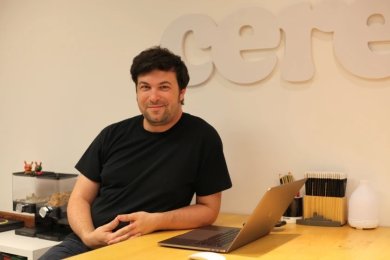
NDSU students are designing interior spaces to promote wellness and healing for veterans.
Students in the fall section of Interior Design Studio III were tasked with designing affordable and inclusive housing units for veterans. Each team of students designed a unique space, but all designs needed to ease suffering, create a sense of community and cultivate empowerment.
The students addressed challenges faced by veterans, including post-traumatic stress disorder, anxiety and homelessness, while designing a space that could serve individuals and the community.
Students Marcus Mack and Isaac Stauffacher focused their project on safety and comfort.
“Our design solution, ‘the Nest,’ is based off the idea that these veterans are brave and strong, like eagles, but need some support in finding a safe, comfortable housing,” said Mack, a junior interior design student from Rochester, Minnesota. “The largest key factor in our design solution is the idea that the whole space will feel welcoming and include innovative design solutions that will make these veterans home lives a little bit easier.”
Another group composed of students Portia Kettering and Michaela Hol had a specific focus on homeless veterans in the Fargo area. Their design was “Holistic Supportive Housing.” Like Mack and Stauffacher, Kettering and Hol’s design created community and comfort to their specific population.
“Our design solution allows veterans to feel safe, supported and connected,” they said.
Students received critiques from professionals in the community who work with and serve veterans as they completed their projects. Chris Deery, the veterans service director for Cass County, spoke to students at the beginning of the semester about his experience in the military and as a veteran. Deery returned throughout the semester to provide feedback to students as their projects progressed.
“We brought a certain perspective to the project and the students ran with it,” said Deery. “I was so proud of their team outcomes and sharing how veterans feel about helping other veterans who are in need.”
“The critiques helped our project greatly,” said Kettering and Hol. “During critiques there were some issues brought to our attention that we would have otherwise missed. Having another set of eyes analyzing our project definitely helped us get to the point we are at today.”
The challenge was to design a large space, and ensure it met the criteria and supported the individuals using the space. Students enjoyed the experience and said it was impactful.
“It is classes like this one that have made us fall in love with the interior design major,” said Kettering and Hol. “This class is challenging but it allows us to be creative and experience what a career in interior design will be like.”
While the project developed hypothetical designs, Mack said the project reinforced the importance of making a space inclusive.
“This class has forced us to think about difficult things veterans have to face like PTSD, or disabilities like amputations or blindness, and how all of those should affect the way we design,” he said. “I think it is really important for us, as students and future designers to be learning about designing inclusively because many public spaces today are designed for the average person, not utilizing all of the universal design strategies that help make people with diverse abilities use spaces and feel included.”
“To put a name to a face and see veterans and what the price of freedoms really looks like on a given level is important,” said Deery. “We addressed needs and brought ideas through on how to end veteran homelessness within our community. The students were bursting with ideas and their creative juices were flowing to provide unique designs from our rather direct answers. I hope we both learned from each other and I am very excited for the future of this program.”




